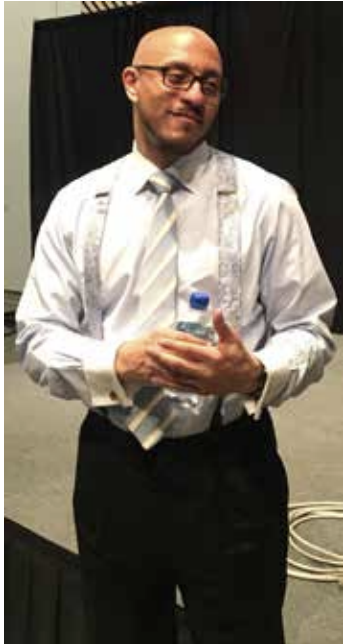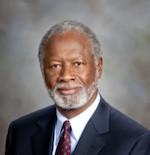
Professor Hasan Kwame Jeffries made it plain this past Monday at the Museum of Contemporary Art: Martin Luther King Jr. was a radical far ahead of his time.
Jeffries delivered an informal but well-prepared talk to an ethnically and generationally diverse audience of perhaps sixty people who braved biting-cold temperature and wind on MLK Day.
It is safe to say that for this audience, the increasingly bland and bleached establishment version of King’s adult life and work that reduces his groundbreaking political and social activism to romanticized and mythologized sound-bites about colorblindness and Christian love and nonviolence was thoroughly shattered.
King didn’t want people to ignore his black skin. In tracing the trajectory of the revered social and political activist’s life, Jeffries pointed out that King was steeped in blackness from birth to death, and especially during his formative years all the way through Morehouse College in Atlanta.
King didn’t want race or color set aside; he wanted them not to be a basis for discrimination.
Jeffries placed King’s life and work firmly in the context of the black presence in American history. King, he said, “wanted what black people had been fighting for since emancipation: fundamental human rights.”
King didn't want people to ignore his black sking; he wanted it not to be a basis for discrimination.
Jeffries said “civil rights” emerged during the 1950s and ‘60s as a narrower framing of human rights, in the shadow of Cold War concerns. But King defined freedom as having both human rights and civil rights. He reminded the audience that the 1963 March on Washington [was] for Jobs and Freedom.
Jeffries discussed King’s advocacy not just for a minimum wage, but also for a guaranteed income. He said that King always defined himself as a Democratic Socialist whose worldview was defined by a Christian witness that required people to be engaged on the ground.
King was a black nationalist in terms of both his upbringing in Jim Crow America — a social system enforced by violence and designed to demean and prepare black people for exploitation — and his clear understanding that the problems black people faced were rooted in their race.
Jeffries walked his listeners through the complexities of King’s nonviolent approach, which emerged as a strategy for working around the omnipresent violence of white people. Jeffries credited Massillon, Ohio native James Lawson for leading the way for the development of nonviolence as an effective tactic.
“King was dragged, kicking and screaming, into the frontlines of nonviolent, direct action,” Jeffries asserted.
Jeffries’ talk illuminated the multifaceted, collegial, emergent aspects of the civil rights movement. King did not have a problem with Black Power, he said, and understood its virtues in the continuum of black protest.
Professor Jeffries made the journey up I-71 from Ohio State University where his course offerings include African American and American history, with particular focus on the Civil Rights and Black Power Movement; Race, Ethnicity and Nation; and Power, Culture and the State.
The program was videotaped and will likely be available on YouTube at a later date, according to a museum official. Contact the Museum for details.
• • •• • •
Originally published January 27, 2019 in The Real Deal Press, Vol IV, Issue 14. Updated January 18, 2024 @ 2223. See original version here.













